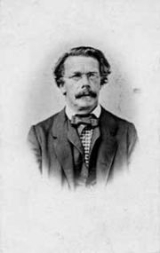
Heidelberg University Faculty of Mathematics and Computer Science
Encyclopedia
The Faculty of Mathematics and Computer Science is one of twelve faculties at the University of Heidelberg. It comprises the Institute of Mathematics, the Institute of Applied Mathematics, and the Institute of Computer Science. The faculty maintains close relationships to the Interdisciplinary Center for Scientific Computing (IWR)
and the Mathematics Center Heidelberg (MATCH). The first chair of mathematics was entrusted to the physician Jacob Curio in the year 1547.
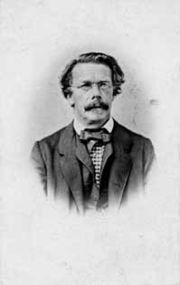
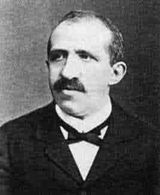
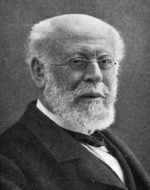
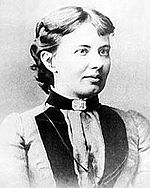 In 1547, the first chair of mathematics was entrusted to the physician Jacob Curio. Today, areas of research include:
In 1547, the first chair of mathematics was entrusted to the physician Jacob Curio. Today, areas of research include:
became the first director of the Institute of Applied Mathematics. Today, areas of research include:
Interdisciplinary Center for Scientific Computing
thumb|right|200px|South west view of the IWR building, located at Heidelberg's New CampusThe Interdisciplinary Center for Scientific Computing is a scientific research institute of the University of Heidelberg, Germany...
and the Mathematics Center Heidelberg (MATCH). The first chair of mathematics was entrusted to the physician Jacob Curio in the year 1547.
Institute of Mathematics




- Complex analysisComplex analysisComplex analysis, traditionally known as the theory of functions of a complex variable, is the branch of mathematical analysis that investigates functions of complex numbers. It is useful in many branches of mathematics, including number theory and applied mathematics; as well as in physics,...
: automorphic functions and modular forms - ArithmeticArithmeticArithmetic or arithmetics is the oldest and most elementary branch of mathematics, used by almost everyone, for tasks ranging from simple day-to-day counting to advanced science and business calculations. It involves the study of quantity, especially as the result of combining numbers...
: algebraic number theoryAlgebraic number theoryAlgebraic number theory is a major branch of number theory which studies algebraic structures related to algebraic integers. This is generally accomplished by considering a ring of algebraic integers O in an algebraic number field K/Q, and studying their algebraic properties such as factorization,...
, algorithmic algebra, and arithmetical geometry - TopologyTopologyTopology is a major area of mathematics concerned with properties that are preserved under continuous deformations of objects, such as deformations that involve stretching, but no tearing or gluing...
and geometryGeometryGeometry arose as the field of knowledge dealing with spatial relationships. Geometry was one of the two fields of pre-modern mathematics, the other being the study of numbers ....
: geometric partial differential equations, algebraic topologyAlgebraic topologyAlgebraic topology is a branch of mathematics which uses tools from abstract algebra to study topological spaces. The basic goal is to find algebraic invariants that classify topological spaces up to homeomorphism, though usually most classify up to homotopy equivalence.Although algebraic topology...
, differential topologyDifferential topologyIn mathematics, differential topology is the field dealing with differentiable functions on differentiable manifolds. It is closely related to differential geometry and together they make up the geometric theory of differentiable manifolds.- Description :...
, and differential geometry
Institute of Applied Mathematics
In 1957, Gottfried KötheGottfried Köthe
Gottfried Maria Hugo Köthe was an Austrian mathematician working in abstract algebra and functional analysis.- Scientific career :...
became the first director of the Institute of Applied Mathematics. Today, areas of research include:
- Probability theoryProbability theoryProbability theory is the branch of mathematics concerned with analysis of random phenomena. The central objects of probability theory are random variables, stochastic processes, and events: mathematical abstractions of non-deterministic events or measured quantities that may either be single...
and statisticsStatisticsStatistics is the study of the collection, organization, analysis, and interpretation of data. It deals with all aspects of this, including the planning of data collection in terms of the design of surveys and experiments....
: time-series analysis, nonparametrics, asymptotic statistical proceduresAsymptotic theoryAsymptotic theory or large sample theory is the branch of mathematics which studies properties of asymptotic expansions.The most known result of this field is the prime number theorem:...
, and computer-intensive statistical methods - Applied analysis, numerical analysisNumerical analysisNumerical analysis is the study of algorithms that use numerical approximation for the problems of mathematical analysis ....
and optimizationOptimization (mathematics)In mathematics, computational science, or management science, mathematical optimization refers to the selection of a best element from some set of available alternatives....
, notably in the field of modelling and scientific computing.
Institute of Computer Science
In 2001, the Institute of Computer Science was founded. Today, areas of research include:- Computability and computational complexity theoryComputational complexity theoryComputational complexity theory is a branch of the theory of computation in theoretical computer science and mathematics that focuses on classifying computational problems according to their inherent difficulty, and relating those classes to each other...
- Efficient use of high-power computing systemsHigh-performance computingHigh-performance computing uses supercomputers and computer clusters to solve advanced computation problems. Today, computer systems approaching the teraflops-region are counted as HPC-computers.-Overview:...
- Development, administration and use of web-based information systemsInformation systemsInformation Systems is an academic/professional discipline bridging the business field and the well-defined computer science field that is evolving toward a new scientific area of study...
- Knowledge managementKnowledge managementKnowledge management comprises a range of strategies and practices used in an organization to identify, create, represent, distribute, and enable adoption of insights and experiences...
in software developmentSoftware developmentSoftware development is the development of a software product...
Noted mathematicians and computer scientists
- Moritz Benedikt Cantor: "History of mathematicsHistory of mathematicsThe area of study known as the history of mathematics is primarily an investigation into the origin of discoveries in mathematics and, to a lesser extent, an investigation into the mathematical methods and notation of the past....
" - Immanuel Lazarus Fuchs: "Fuchsian groupFuchsian groupIn mathematics, a Fuchsian group is a discrete subgroup of PSL. The group PSL can be regarded as a group of isometries of the hyperbolic plane, or conformal transformations of the unit disc, or conformal transformations of the upper half plane, so a Fuchsian group can be regarded as a group acting...
", "Picard–Fuchs equation" - Carl Friedrich GaussCarl Friedrich GaussJohann Carl Friedrich Gauss was a German mathematician and scientist who contributed significantly to many fields, including number theory, statistics, analysis, differential geometry, geodesy, geophysics, electrostatics, astronomy and optics.Sometimes referred to as the Princeps mathematicorum...
: - Emil Julius GumbelEmil Julius GumbelEmil Julius Gumbel was a Jewish mathematician and political writer.Born in Munich, he graduated from the University of Munich shortly before the outbreak of the First World War...
: "Gumbel distribution" - Otto HesseOtto HesseLudwig Otto Hesse was a German mathematician. Hesse was born in Königsberg, Prussia, and died in Munich, Bavaria. He worked on algebraic invariants...
: "Hessian curveHessian curveIn geometry, the Hessian curve is a plane curve similar to folium of Descartes. It is named after the German mathematician Otto Hesse.This curve was suggested for application in elliptic curve cryptography, because arithmetic in this curve representation is faster and needs less memory than...
", "Hessian matrixHessian matrixIn mathematics, the Hessian matrix is the square matrix of second-order partial derivatives of a function; that is, it describes the local curvature of a function of many variables. The Hessian matrix was developed in the 19th century by the German mathematician Ludwig Otto Hesse and later named...
", "Hesse normal form" - Leo Koenigsberger
- Sofia KovalevskayaSofia KovalevskayaSofia Vasilyevna Kovalevskaya , was the first major Russian female mathematician, responsible for important original contributions to analysis, differential equations and mechanics, and the first woman appointed to a full professorship in Northern Europe.She was also one of the first females to...
: "Cauchy–Kowalevski theorem" - Emanuel LaskerEmanuel LaskerEmanuel Lasker was a German chess player, mathematician, and philosopher who was World Chess Champion for 27 years...
: "Lasker–Noether theoremLasker–Noether theoremIn mathematics, the Lasker–Noether theorem states that every Noetherian ring is a Lasker ring, which means that every ideal can be written as an intersection of finitely many primary ideals...
" - Hans Maaß
- Max NoetherMax NoetherMax Noether was a German mathematician who worked on algebraic geometry and the theory of algebraic functions. He has been called "one of the finest mathematicians of the nineteenth century".-Biography:...
: "Max Noether's theoremMax Noether's theoremIn mathematics, Max Noether's theorem in algebraic geometry may refer to at least six results of Max Noether. Noether's theorem usually refers to a result derived from work of his daughter Emmy Noether....
" - Oskar PerronOskar PerronOskar Perron was a German mathematician.He was a professor at the University of Heidelberg from 1914 to 1922 and at the University of Munich from 1922 to 1951...
: "Perron–Frobenius theoremPerron–Frobenius theoremIn linear algebra, the Perron–Frobenius theorem, proved by and , asserts that a real square matrix with positive entries has a unique largest real eigenvalue and that the corresponding eigenvector has strictly positive components, and also asserts a similar statement for certain classes of...
", "Perron's formulaPerron's formulaIn mathematics, and more particularly in analytic number theory, Perron's formula is a formula due to Oskar Perron to calculate the sum of an arithmetical function, by means of an inverse Mellin transform.-Statement:...
", "Perron integral" - Friedrich Karl Schmidt
- Herbert SeifertHerbert SeifertHerbert Karl Johannes Seifert was a German mathematician known for his work in topology....
: "Seifert fiber spaceSeifert fiber spaceA Seifert fiber space is a 3-manifold together with a "nice" decomposition as a disjoint union of circles. In other words it is a S^1-bundle over a 2-dimensional orbifold...
", "Seifert surfaceSeifert surfaceIn mathematics, a Seifert surface is a surface whose boundary is a given knot or link.Such surfaces can be used to study the properties of the associated knot or link. For example, many knot invariants are most easily calculated using a Seifert surface...
", "Seifert–van Kampen theoremSeifert–van Kampen theoremIn mathematics, the Seifert-van Kampen theorem of algebraic topology, sometimes just called van Kampen's theorem, expresses the structure of the fundamental group of a topological space X, in terms of the fundamental groups of two open, path-connected subspaces U and V that cover X...
", "Seifert conjectureSeifert conjectureIn mathematics, the Seifert conjecture states that every nonsingular, continuous vector field on the 3-sphere has a closed orbit. It is named after Herbert Seifert. In a 1950 paper, Seifert asked if such a vector field exists, but did not phrase non-existence as a conjecture...
", Seifert–Weber space - Paul StäckelPaul StäckelPaul Gustav Samuel Stäckel was a German mathematician, active in the areas of differential geometry, number theory, and non-Euclidean geometry. In the area of prime number theory, he used the term twin prime for the first time.-External links:...
: "twin primeTwin primeA twin prime is a prime number that differs from another prime number by two. Except for the pair , this is the smallest possible difference between two primes. Some examples of twin prime pairs are , , , , and...
" - William Threlfall
- Heinrich WeberHeinrich WeberHeinrich Martin Weber was a German mathematician. Weber's main work was in algebra, number theory, and analysis...
: "Kronecker–Weber theoremKronecker–Weber theoremIn algebraic number theory, the Kronecker–Weber theorem states that every finite abelian extension of the field of rational numbers Q, or in other words, every algebraic number field whose Galois group over Q is abelian, is a subfield of a cyclotomic field, i.e. a field obtained by adjoining a root...
", "Weber's theoremWeber's theoremIn mathematics, Weber's theorem, named after Heinrich Martin Weber, is a result on algebraic curves. It states the following....
"

